Once referred to as a “perversion” or mental illness, modern day masturbation is seen as very normal, socially acceptable (when done privately), and a positive way to relieve stress or sexual tension throughout life. According to sexologist Logan Levkoff, PhD, when part of a well-rounded, happy, and satisfying life, masturbation can be absolutely fine and actually quite healthy. Additionally, Dr. Gloria Brame, clinical sexologist, states that “Masturbation is part of a healthy sex life. It’s totally safe and harmless.” But when it interferes with normal functioning, i.e. having a job and healthy sex with your partner, you may want to consider cutting down on the habit or even seeing a therapist about it. Let’s consider the pros and cons of masturbating and you can decide how much is right for you!
KJ Callihan
The Most Popular Health, Beauty and Household Uses for Epsom Salts
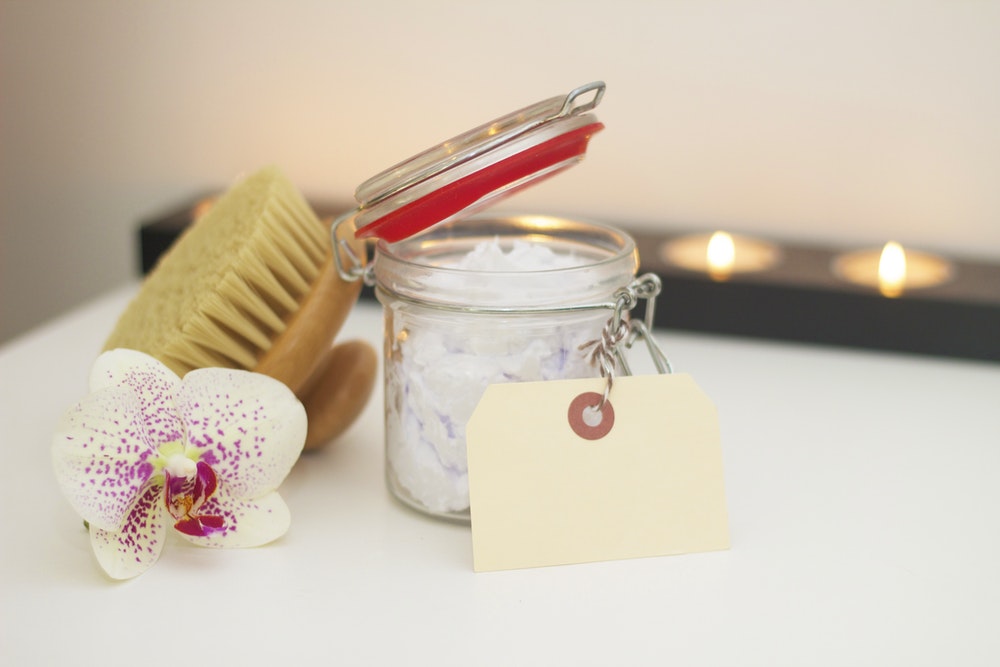
What are epsom salts and why are so many people using them?
An excellent source of magnesium, epsom salts (known chemically as magnesium sulfate) are a popular mineral compound typically sold in crystal form which have been used for decades for a variety of health, beauty, and household benefits. According to the Epsom Salt Council, proper functioning of many bodily processes and adequate regulation of enzyme activity in the body relies upon magnesium. Since magnesium is a primary component in epsom salts, epsom bath soaks and other transdermal applications are highly beneficial. Sadly, most Americans are magnesium deficient, adding to instances of heart disease, osteoporosis, stroke, joint pain, chronic fatigue, digestive problems, and stress issues.
But why are epsom salts so great for the human body and other living beings? Let’s check the science on it.
The Birmingham School of Biosciences explains that sulfate is necessary for numerous biological processes including joint formation, proper digestion, brain tissue development and healthy neuronal connections, bodily detoxification processes following toxin exposure, and more. The School shares that regular bathing in epsom salts is a great way to increase sulfate and magnesium levels in the body.
How can I use epsom salts for health and beauty purposes?
According to Wellness Mama, the best way to take epsom salts is transdermally — or through the skin. Popular uses as such on the Mama’s site and the Epsom Salt Council site include a toxin-extracting bath soak, a callus-softening foot soak (rough calluses come off easily with a pummice stone after a 15-minute foot soak with epsom salts) or foot scrub, an exfoliating and skin-firming facial wash, a hair-thickening spray, a rejuvenating salt scrub for the shower (just use epsom salts in place of Himalayan salt in a recipe such as this), constipation relief (call a doctor before trying this one, but it’s said to work well if done correctly), a pain-relieving compress (soak a cotton washcloth in water mixed with epsom salts), a splinter-removing soak (ten minutes and it comes right out on the first try with the tweezers!), a body-enhancing hair conditioner (just mix a pinch with your favorite conditioner and leave on for ten minutes to add body to fine hair)a skin-clarifying paste (chill hot water mixed with epsom salts for 20 minutes, then make the paste and apply to clean skin), a sunburn-relieving spray, and a lotion or body butter for bug bites, insomnia, or body/muscle and headache relief.
To make a face mask for normal to oily skin, mix up a batch of the recipe on this site; for normal to dry skin, try the one right after it. You’ll need a few interesting ingredients besides the epsom salt for these, so be sure you have them on hand!
To reduce swelling and bruising from an injury, add 2 cups of epsom salt to a warm bath and soak. To reduce episiotomy soreness, make a paste of epsom salts and hot water and apply to the affected area, then soak. For bronchial asthma or arthritis, soak in a hot bath with 2 cups of epsom salts dissolved in it for at least 15 minutes. And you can help little ones get a dose of transdermal epsom salt while keeping their skin soft with this DIY epsom salt play-dough to boot! Finally, if you want to get fancy with your bath soak, the Epsom Salt Council recommends this indulgent, pore-cleansing, and detoxifying Champagne Soak for optimal relaxation. Yep, it actually does call for champagne, as well as warm honey, powdered milk, and rose petals. (Are you blissed out just thinking about it like I am?)
But that’s not all – you can use these miraculous salts in several other ways around the house, too!
Improve your garden and deter pests
You can sprinkle about a tablespoon around on your soil at the base of plants to improve your vegetable garden. Try the same with rose bushes and house plants about once a month for best results. Plants will grow taller and produce more veggies, and slugs will be deterred as well.
Make scouring powder for cleaning tile and grout
You can also make homemade scouring powder with epsom salts by adding a pinch to dish soap or other cleansers. For these and any other uses, the Mama recommends high quality epsom salts free of added ingredients and USP certified. You can order online or search health food stores and grocers near you.
- As with all my articles, please consult your physician before attempting any of these recipes or DIY methods to be sure they’re right for you.
Why It’s Time to Stock up on Elderberry Syrup – or Make Your Own!
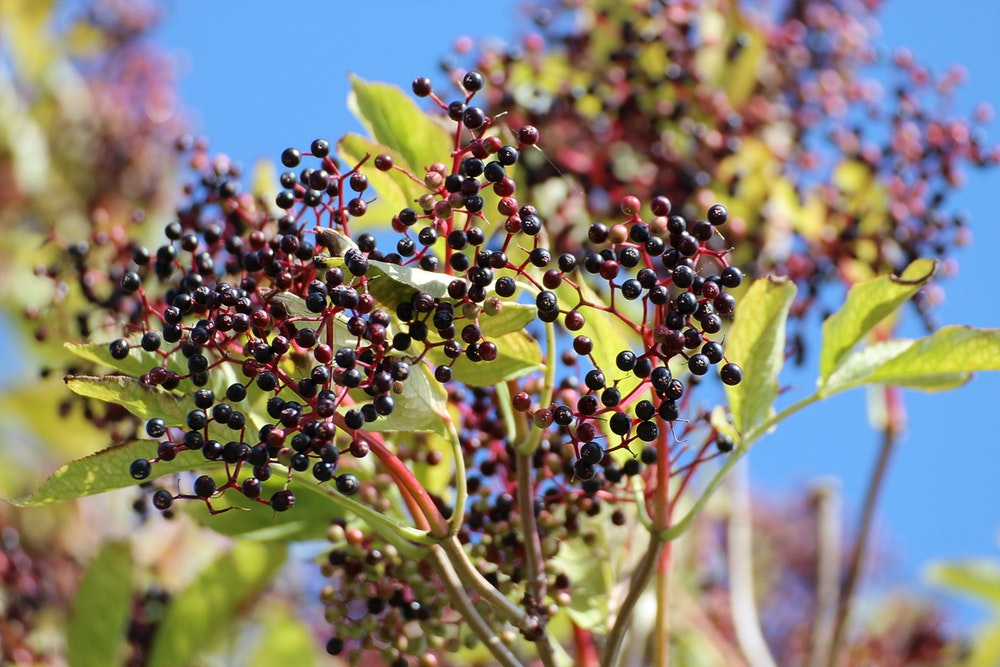
Have you ever tried elderberry syrup to prevent or decrease cold symptoms? Well, if not, it’s time you did! An ancient folk remedy used by Europeans and Native Americans, the elderberry has been used for a variety of ailments, most widely to prevent or alleviate symptoms of the common cold or flu. Fans of the little black berries swear by their efficacy and insist that when taken at the very first sign of a cold (which means it must be kept in the house at all times — and during cold/flu season especially), you can bypass the cold entirely. Others say that it might not prevent the cold, but it can definitely shorten its duration and decrease the severity of symptoms. Let’s take a look at why science thinks it works, and then we’ll check out a recipe you can use to make your own delicious homemade batch of elderberry syrup this cold season!
According to the University of Michigan Health Library, only the dark blue or black elderberries (also referred to as Sambucus nigra), and not the red varieties, are medicinal in North America and Europe. While both the flowers and berries of the plant can be used in different types of treatment, the berries show antiviral activity and are most popular for use in both factory-produced and homemade syrups. The elderberry is also immune-supportive and antimicrobial.
In a double-blind trial, U of M Health Library states that the “administration of an elderberry extract decreased the number of days with cold symptoms by 52% and decreased average symptom severity by 58%, compared with placebo, in people travelling on intercontinental flights. The amount used was 600 to 900 mg per day of an extract standardized to contain 20% polyphenols and 15% anthocyanins…” Additionally, the Health Library shares that a similar study on elderberry and inflluenza showed a faster recovery rate for those receiving elderberry syrup of 38% extract (four tablespoons daily for adults, and two for children) than those receiving placebo.
To explain it further, the Health Library states that flavonoids containing quercetin are likely what packs the elderberry’s punch. Anthocyanins high in antioxidants make up part of these flavonoids, boosting immunity and inhibiting viruses like influenza. Animal studies indicate elderberries may also be anti-inflammatory as well. The bonus is that there have been no interaction concerns or side effects reported when syrups properly made from the berries are used. However, unripe berries, roots, leaves, and stems may be toxic and cause nausea, vomiting, and diarrhea, so be sure you’ve researched and carefully read the packaging on your elderberry ingredients before ingesting.
Although you can find elderberry syrup for sale in most pharmacies (I’ve seen this brand at Meijer and Walgreen’s, but others swear by this brand or others from health food stores — but it can get pricey when taking it throughout the cold season as each 8 oz bottle can cost between $10 – $15…following some of the brands on social media might get you a coupon or two. And even though the elderberry gummies look tasty for kids and the lozenges, etc., seem more convenient, I personally haven’t had the same luck with anything other than the original syrup), some opt to make their own at home.
Wellness Mama has shared her famous elderberry syrup recipe on her site, which uses organic dried black elderberries she orders online — and these sell out quickly as cold season approaches, so get on this soon if you plan to do it! Her recipe makes a full quart of elderberry syrup, which can be stored in the refrigerator and used as a regular pancake syrup as well as an occasional medicine, or you can take a shot or two daily for prevention throughout the cold and flu season. (I used to take a bottle with me in my purse when substitute teaching in the elementary schools a few years ago, and I’d take a tablespoon every four hours. Miraculously, I made it through several winters this way without getting sick, even when surrounded by coughing and sneezing children all day long.)
Wellness Mama references the research of Dr. Madeleine Mumcuoglu of Hadassah-Hebrew University in Israel on her website, and Dr. Mumcuoglu is also featured on the packaging of Sambucol brand elderberry syrup. According to the site reference, Dr. Mumcuoglu found that, “elderberry disarms the enzyme viruses used to penetrate healthy cells in the lining of the nose and throat. Taken before infection, it prevents infection. Taken after infection, it prevents spread of the virus through the respiratory tract. In a clinical trial, 20% of study subjects reported significant improvement within 24 hours, 70% by 48 hours, and 90% claimed complete cure in three days. In contrast, subjects receiving the placebo required 6 days to recover.”
Pair all the scientific evidence with the fact that it tastes good too, and you really can’t miss with elderberry syrup!
* As with all my articles, please consult your physician before attempting this or any other home remedy to be sure it’s right for you.
What You Should Know Before Your Vaginal Steam
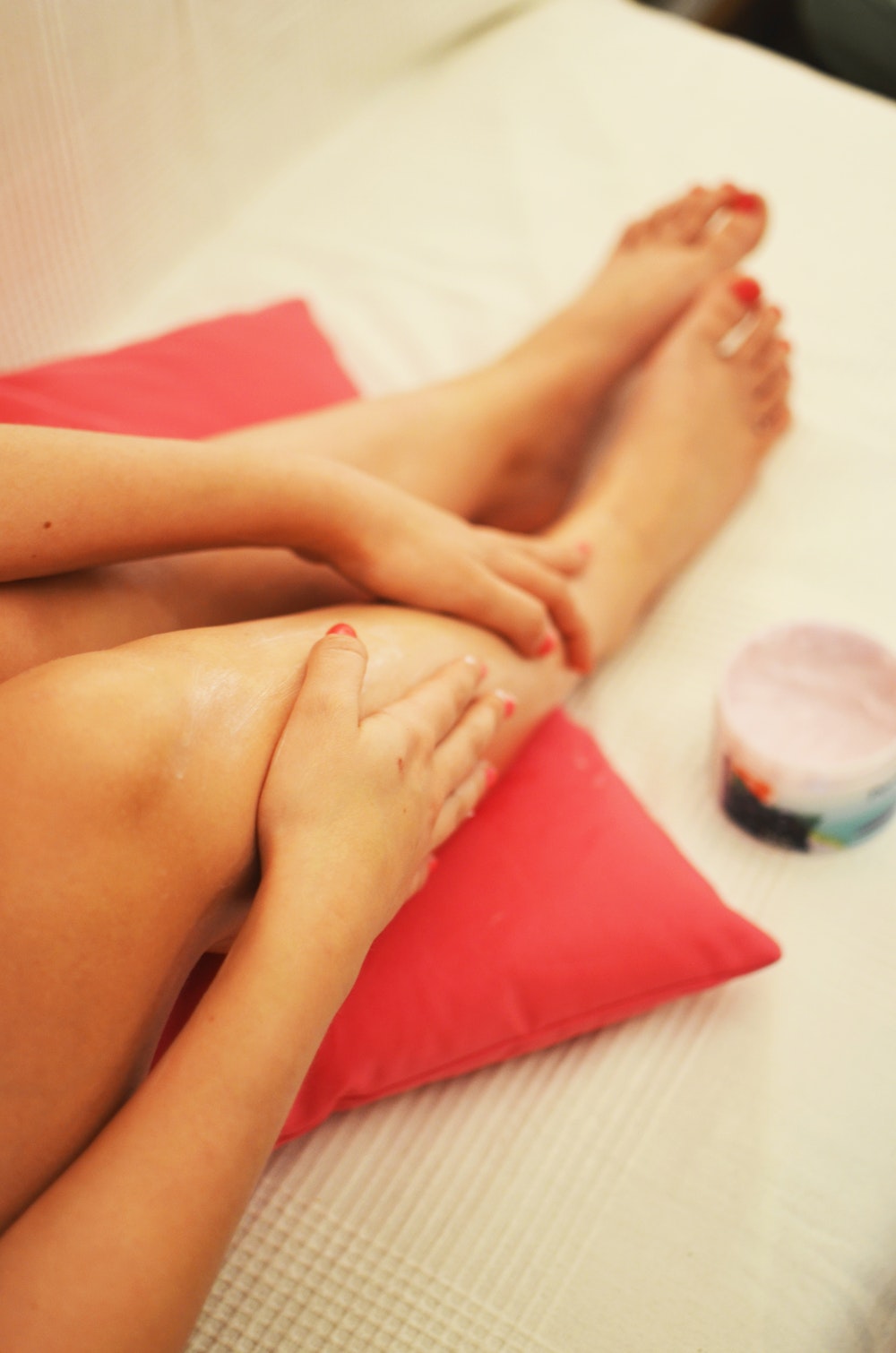
Ready for a V-Steam or Nay?
According to Medical Daily, vaginal steaming, which is more commonly known as v-steaming (or known in other cultures as the bajo, Chai-yok, or yoni steam), is “an ancient Korean treatment that provides a “steam facial” for the vagina to tone the muscles and release toxins. Although there is no clinical evidence to support the benefits of v-steams, there is a great deal of anecdotal evidence that supports its healing abilities. But how does it work, and what are the risks or concerns? We’ve taken a look and found the biggest pros and cons on the matter.
How Does it Work and How Much Does it Cost?
V-steams usually go like this: the woman squats over a steaming blend of herbs in water, which often includes a variety of herbs but usually contains mugwort and wormwood.
Mugwort and wormwood: not just for Harry Potter stories anymore
Mugwort is supposed to support healthy stomach and digestive functions, alleviate endometriosis, menopausal and menstrual ailments, stimulate uterine hormones and promote uterine health and fertility. Wormwood is said to also promote healthy digestion, as well as immune system support, menstrual and hormone regulation, and provide antimicrobial and sedative effects. Additional herbs added to the blends can vary, including lavender, dandelion, rosemary, lemon balm, marigold, peppermint, chamomile, and burdock root.
The Costs and Potential DIY Methods
The treatment, offered in numerous wellness and alternative health centers across the country, which lasts from 30 to 45 minutes, costs anywhere from $25 to $75, and can be done at home with the purchase of an approved kit. Some also swear by their own DIY home methods.
According to Some, What it Does for your Body is Complex
Done properly, it is supposed to relax pelvic floor muscles, tone the cervix, vagina, and uterus, increase oxygen flow, dilate blood vessels, and increase blood circulation. The herbal steam is also said to thin mucus and help the body discard unneeded build-up which improves the functioning of the entire reproductive system.
The Pros
* Some insist it improves the recipient’s sex life. Celebrities who’ve tried it rave about the benefits. Others are convinced it aids fertility and helped them get pregnant.
* It alleviates menstrual cramping and other discomforts. It’s proponents also believe it decreases menstrual flow, regulates the cycles, speeds after-birth healing, tones the reproductive system following birth, helps treat uterine fibroids, prolapse, and endometriosis, as well as ovarian cysts.
* It can help heal hemorrhoids, vaginal tearing, episiotomy, or C-section scarring.
* Proponents claim it treats yeast infections and promotes a healthy odor
* It can alleviate menopausal symptoms.
* It’s said to “detoxify the womb and remove toxins from the body.”
* Strongest proponents believe it has historically been used for health reasons and its benefits far outweigh any risks or concerns. Director of Naprapathy and Master Herbalist Rosita Arvigo explains that her years of studying yoni steams with Mayan women who use the treatment regularly revealed it to be “universally effective for any aspect of uterine pathology.”
Cons
* It lacks scientific substantiation. According to Dr. Draion Burch, a Pittsburh ob-gyn,”There’s no scientific evidence that shows it works.” Burch also believes v-steaming can lead to potentially harmful side effects.
* It’s unnecessary. Since the vagina is self-cleaning, there is no need for “extra” cleaning of any kind. If there is an infection, most doctors recommend probiotics or other such remedies. Additionally, a 2004 study in the American Journal of Nursing stated that women who douched (similar to yoni steaming) were more likely to get bacterial vaginosis, a disruption in the normal flora in the vagina. Live Science also shares that,“Bacterial vaginosis, in turn, is also associated with an increased risk of contracting HIV. And a 2001 study in the Maternal Child Health Journal suggested that douching during pregnancy could increase the risk of preterm labor.”
* You can get burned. Some say the steam is very hot and should be closely monitored for proper temperature before exposing the vagina or any body parts to it.
* It can cause problems if you have an IUD or are pregnant. Some warn that loosening up the muscles too much with steam (or using the wrong combination of herbs) can cause the IUD to become improperly placed and a possible miscarriage to occur.
*as with all my posts, please consult your physician before attempting any of the treatments, exercises, or diet strategies listed here. If you plan to do an at-home v-steam, please consult your doctor first, especially if you are pregnant or have an IUD.
The Scoop on Sciatica Symptoms and Relief
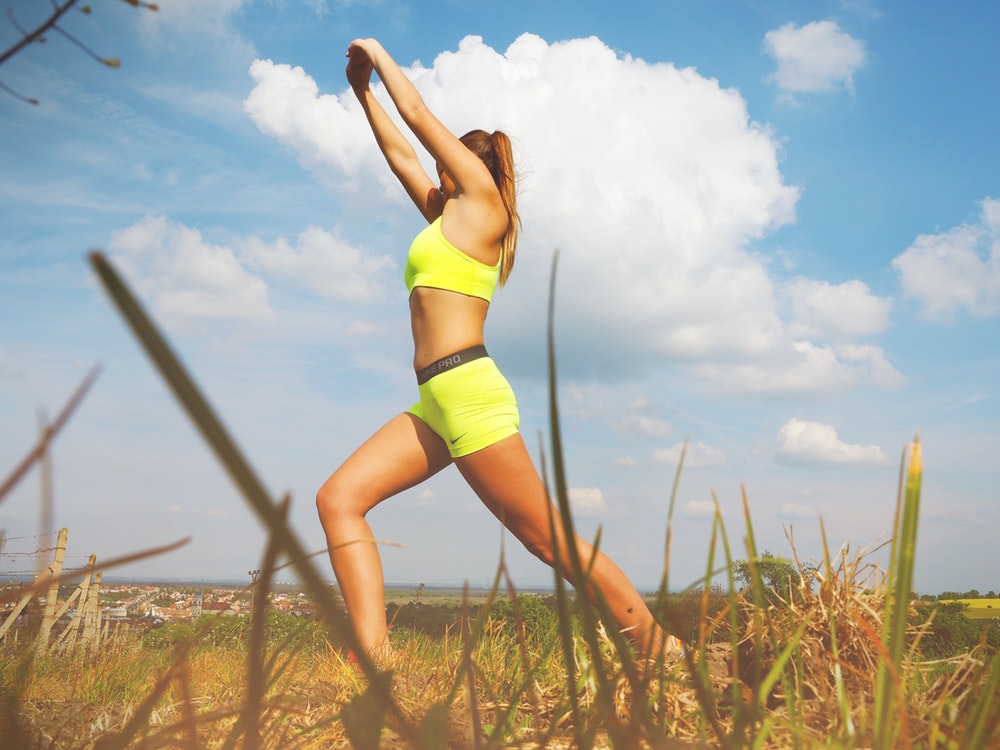
What is Sciatica?
The sciatic nerve, which is associated with sciatica pain, is the widest and longest nerve in the bodies of humans and other animals. Running from the lower back through the buttock and leg, it has several other nerves branching out from it, and connects the nervous system for nearly all of the muscles in the back of the thigh, leg, and foot, as well as the skin of the leg. Generally, anything that causes irritation of or pressure on the sciatic nerve can result in sciatica symptoms, including bulging or herniated disks, trauma, poor posture, lack of muscle tone, and degeneration of disks or of the spine itself.
Relieving sciatica symptoms (sciatica is not actually a condition, but rather a term used to describe the symptoms associated with sciatic nerve irritation), usually requires the alleviation of the pressure or irritation, followed by a healing period. Many types of drugs may be prescribed for the pain, including anti-convulsants, anti-depressants, anti-inflammatories, pain relievers, etc., but they often simply mask the symptoms, allowing them to return in full when the medication wears off. The same is true for most over-the-counter and herbal remedies, since the root of the problem isn’t being addressed. Surgery is an extreme solution which most prefer to avoid if at all possible for many reasons, including the expense and amount of healing time required. Bed rest can actually make sciatica worse, as can over-exertion and sitting for long periods of time, so experts recommend maintaining a moderate activity level even if experiencing sciatica symptoms.
When people prefer alternative treatments to drugs and surgery, there are options
Since drugs can be problematic with side effects, interactions, and other issues, and surgery is nobody’s favorite experience, many sciatica sufferers seek alternative forms of treatment. Some of these include (but are not limited to) acupuncture, acupressure, biofeedback, yoga, herbal medicine, and prevention. Since the root of sciatica appears to be related to the structure of the spine, disks, and muscles surrounding the nerve, prevention seems like the best option for starters.
Prevention
Preventative measures to avoid sciatica include maintaining a healthy weight through a balanced diet and moderate exercise, limiting overly processed foods and fast foods, and strengthening of the core muscles responsible for protecting the spine. Additionally, maintaining proper posture and ergonomics play an important role. Taking some time to learn the safest way to lift heavy objects, keeping the posture upright when sitting or standing for extended periods, and taking regular breaks from sitting for longer than an hour are all keys to prevention.
Acupunture
Acupuncture is an essential component of ancient traditional Chinese medicine (TCM). It is thought to restore the natural flow of energy throughout the body by manipulating the qi/chi (life energy, or vital life force) of the body’s meridians. Acupuncture uses thin needles to stimulate acupoints, or pressure points, in order to increase or decrease qi/chi to the responding of the body. There are no risks involved if conducted by a properly trained practitioner, and this treatment is very effective when used for pain management, but more than one session is usually required. Moxibustion is another form of acupuncture which applies heat to the acupoints in order to restore energy flow.
Acupressure
Acupressure is similar to acupuncture, as it uses the same anatomical meridian channels and pressure points with the restoration of healthy energy flow in mind. Although needles are not used, acupressure applies firm pressure to the acupoints with the fingers, thumbs, and possible elbows to stimulate energy flow to the responding body area. Very little can go wrong with these treatments when performed by a qualified practitioner, but like acupuncture, several sessions may be needed.
Yoga
Yoga is another way to relieve sciatica symptoms, since the poses and stretches can strengthen the muscles of the region while helping the sufferer learn breathing and meditation techniques along the way which assist in pain management. Some yoga poses are specifically helpful for sciatica symptoms, but sufferers should be sure to make instructors aware of their condition before attempting any class — and also make sure their instructor is properly trained and well-informed.
Biofeedback
Biofeedback is a therapy that teaches sufferers deep breathing techniques, visualizations, mental exercises and some physical movements in order to gain control over and alter their pain. Practitioners believe biofeedback can help people gain control over the heart rate, blood flow, and other processes. In addition to sciatica treatment, it can also be used for digestive disorders, high or low blood pressure, or even certain brain-related conditions like brain injuries, ADHD, depression, and PTSD.
*As with all my articles, please consult your physician before attempting these or any other health remedies, exercises, or diet strategies listed here.
Why Worms Should Concern Every Human on Earth

Think Worms and Other Parasites Needn’t Concern You? Think Again
Did you know that a single worm can live up to fifteen years in the human body? In some cases, a single female worm can also lay between 10,000 and 25,000 eggs per day. Additionally, the World Health Organization (WHO) advises that around 3.5 billion people worldwide are worm-infested right now, although only 450 million of those folks are expected to be showing observable signs of illness. WHO adds that children are often the the most likely hosts for parasites — and those estimates aren’t confined to third world countries either. We’ve taken a closer look at worms and similar parasites to find out what you need to know.
What Types of Worms are There and How Do People Become Infected?
Intestinal worms come in three main categories: tapeworms, protozoa, and roundworms. While some of these visitors prefer to remain in the small and/or large intestines, others like to roam the body. They can range in size from microscopic to several feet long and generally pass from one person to another via their eggs which are laid in our bodies and later sent out through our feces. Once expelled, they can then live on in soil (or other environments) for extended periods of time, creating vast opportunities to be ingested by others and spread further.
Chances of Exposure Can Increase When Changing Diapers, Washing Laundry, Handling Soil, Eating Under-cooked Meats, Drinking Water or Unpasteurized Milk, or Even Swimming
Other parasites can enter the body through the skin or by eating uncooked meat, (Ever tried sushi? You might have worms yourself), or under-cooked meat, or by drinking unpasteurized milk. Eating unwashed raw food grown on contaminated soil can present a problem too. Still more can infect people through contaminated public water supplies as well as natural water sources which have been exposed to the infected feces of animals or humans. Swimming pools can also harbor the unwanted guests.
Let’s check out some different kinds of worms and parasites and how they spread and survive:
Ascariasis: These are found throughout the world, predominantly in areas of poor sanitation, and can also infest pigs. They can grow up to a foot long and live in the small intestine for up to two years. Their eggs can stay alive in soil for up to 2 years, infecting those who eat produce grown in the soil without thoroughly washing or cooking it. Once ingested, these guys like to travel. They start out by hatching in the stomach once they’re eaten, then move through the blood to the lungs, then onto the throat, and from there they get swallowed again. Once they arrive in the intestines, the process can begin once more with the eggs being expelled through the feces.
These can, on rare occasions, result in surgery
Symptoms from ascariasis are often unseen unless they are heavily infested, but can include stomachaches, bloating, breathing problems, and coughing. These can be visible in the poop or in mucus expelled through the nose. Serious infestations may actually block the intestines or other parts of the body, resulting in the need for surgery to remove them.
Strongyloidiasis: These can live for decades in the body, and usually burrow through the skin if exposed to contaminated soil. Once inside the body, these also like to travel similarly to the ascariasis, although in this case they can also hatch, as well as lay eggs, inside the intestines.
Take careful precautions if you have a weakened immune system or take corticosteroids
Those with weakened immune systems or anyone taking corticosteroids may be particularly susceptible to these, with occasional results of larvae increasing to the point of hyperinfection syndrome, in which some very rare cases become fatal.
Giardiasis: These are found in contaminated water and can infect both humans and animals, leading to diarrhea, cramping and stomach upsets which can last from two to six weeks. Weight loss and more severe symptoms are noticed in around half of those infected.
You can show no symptoms but still infect others. Wash your hands thoroughly and often
Giardiasis is spread easily in institutional settings like hospitals, day care centers, and nursing homes, and some of those infected don’t show symptoms but can still expose others.
Use caution when cleaning up after pets’ (or other animals’) feces
Hookworm: These are roundworms which can also enter the body through the skin or be ingested through the mouth. They can be found in a slightly different type in dogs and cats, which can also infest humans who come into contact with their feces. They travel through the body like the first two, but with these there’s sometimes a noticeable rash where they entered the body. Symptoms similarly include diarrhea and cramping, which can become serious and include bleeding, anemia, weight loss, and malnutrition in those with weakened immune systems or newborns, pregnant women, and very young children.
In addition to these, there are: amebiasis, cyclosporiasis, and cryptosporidiosis, enterobiasis, human tapeworm, and trichinosis, which range in exposure type, typical geography, and symptoms.
Please consult your physician right away if you believe you’ve been exposed to these or any other type of parasite.
What in the World is Wakame?
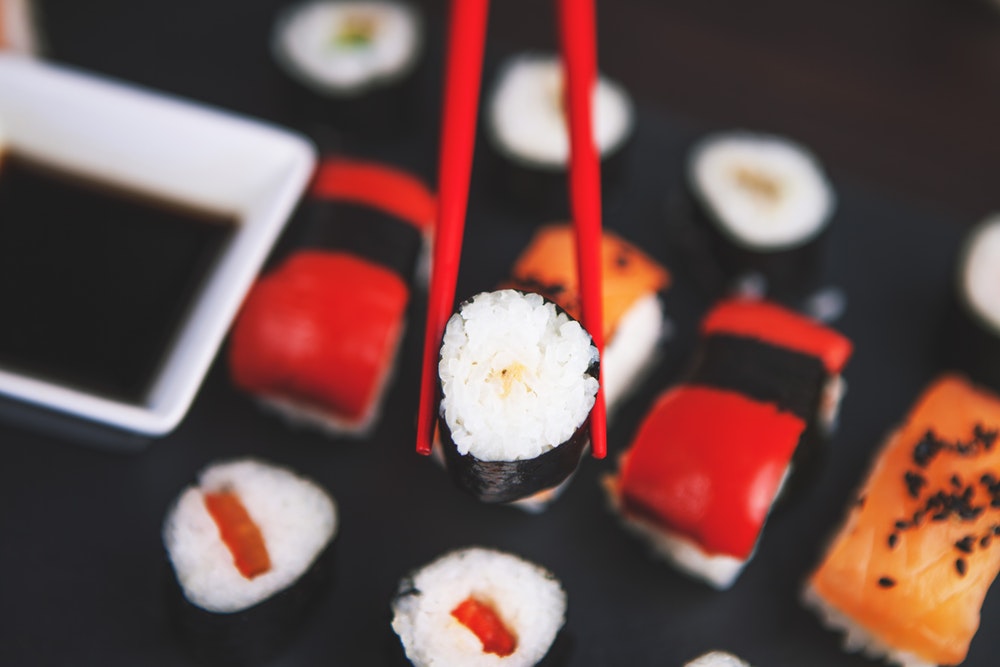
What is Wakame and Why Would Someone Want to Eat It?
According to Wikipedia, wakame, or ワカメ, also known by its scientific name, Undaria pinnatifida, is a sea vegetable, or an edible form of seaweed. Its subtle salty sweet flavor makes it perfect in seaweed salads and miso soups, and Japanese sea farmers have grown it since the Nara period (or the years spanning from AD 710 to 794). It is also found useful as a wrap for sushi in many restaurants.
Flavorful, well-preserved in sea salt, and packing a powerful nutritive punch
Unlike nori, which most commonly adorns sushi rolls, wakame is sold dried as well as fresh. If kept refrigerated, wakame is usually preserved with sea salt and kept soft and moist. Made popular by raw vegans and macrobiotic diets, wakame boasts nutritional properties which make it highly sought after among health enthusiasts who are calling it a Superfood.
Wakame strengthens bones, maintains hormone levels, improves skin health, and even lowers incidence and mortality of breast cancer among certain groups of women
For starters, the University of California conducted a study which suggested that wakame may lower both the breast cancer incidence and mortality among postmenopausal women. Additionally, it is known to strengthen bones, improve circulation, maintain hormone levels, and promote healthy skin.
A component found in wakame, called fucoxanthin, does many wonders for the body
A subsequent study in Japan found that the substance promotes fat-burning inside animals’ fat cells, and another 2004 study indicated the fucoxanthin found in wakame also acts as a chemopreventive and chemotherapeutic compound in colon cancer cells. Again, according to Dr. Axe, fucoxanthin has yet another miraculous purpose: it can also stimulate the liver to reduce harmful cholesterol in the body by producing DHA, making it an excellent cholesterol-lowering food.
It can also balance hormones, reduce PMS symptoms, and boost antioxidant activity
In addition, it’s said to balance hormones due to its high manganese, iron and calcium levels, which also cumulatively reduce symptoms of PMS according to a study in the American Journal of Obstetrics and Gynecology. Due to its antioxidant activity and hormone regulating properties, it is believed to possibly be effective as an infertility treatment as well.
The Chinese have used wakame to treat tumors, and studies show efficacy at preventing osteoporosis
15 percent of an average adult’s daily recommended value of calcium is found in one hundred grams of wakame, and is therefore effective in preventing osteoporosis. In traditional Chinese medicine and folk medicine, seaweed has been used to treat cancerous tumors, and there is a small area of research claiming a link between seaweed and a reduced risk of breast cancer.
Ensure a healthy pregnancy by eating a little wakame
Vitamin B-12, or folate, is another essential nutrient found in wakame, and this one is responsible for copying and synthesizing DNA and other functions needed for a healthy pregnancy.
A perfect source of iron
Providing a great source of iron, wakame ups the production of red blood cells in the body, assisting with a metabolic enzyme process which digests proteins and nutrients from food. Iron-rich foods like wakame can both ensure proper iron levels are met nutritionally while keeping excessive iron supplementation resulting in iron overload from occurring.
Reduces high blood pressure, improves metabolism, fights depression, relieves arthritis, and many other benefits
Believed to be especially effective at reducing high blood pressure, studies have proven wakame “significantly decreased systolic blood pressure of spontaneously hypertensive rats.” Another such study in 2011 focused on Japanese preschoolers who lowered significantly their blood pressure over three days of seaweed intake.
The essential Omega-3 fatty acids are rich in wakame, as well, which is necessary for a healthy metabolism. In addition, Omega 3’s can help fight depression, reduce inflammation, promote vibrant, healthy skin, reverse diabetes, lower cholesterol, relieve arthritis, and reduce anxiety. They’re also known to be important in athletic injury recovery, encourage weight loss, and aid thick hair and nail growth.
In a nutshell, wakame provides so many health benefits, it seems silly not to get some into our diets. If you don’t like sushi, try a little in soup or salad. A little seems to go a long way nutritionally!
*as with all my articles, be sure to consult your physician before attempting to treat any illness or nutritional deficiency discussed here
What is Yin Yoga and Should I Try It?

What is Yin Yoga and Should I Try It?
Yin yoga, most remarkable for its holding of poses for between three to five minutes, is predominantly done to stretch the connecting tissues and envelope the practitioner in calmness. It’s similar to restorative yoga, although relaxation is not the goal. Based on the principles of yin and yang in Chinese philosophy, yin focuses more on the still, calm, and static in the natural world, where yang has more to do with the vigorous, the changing, and movement. While much of modern western yoga tends to embrace the “yang”, yin yoga (obviously) prefers the yin.
Stretching, long holds, stillness, and relaxation
Meditation while sitting is very yin, and following up with a series of stretches is as well. Joints in the pelvis, hips, and lower spine are all primarily addressed in yin yoga, as is sitting with an uncomfortable pose over time, and the encouragement to stay with something even if we don’t necessarily like it. The poses emphasize stretching and relaxing the muscles and joints over several minutes, differing sharply from yang yoga.
Traditional holds, with a slight twist
Poses within yin yoga are taken from well-known traditional yoga poses, but have been adjusted and then renamed to better suit them. Instead of the pigeon pose, there’s the “sleeping swan,” for example, and the “butterfly” takes the place of the cobbler’s pose.
Developed by teacher Paul Grilley, yin yoga is intended to prepare the body for sitting in long meditations and act as a counterpoint to the more prevalent “yang” yoga styles. In yin yoga, basic, well-aligned poses are better suited than impressively difficult ones, since they are to be held for several minutes.When Grilley was a student of Taoist yoga, he admired his teacher Paulie Zink and adhered to the portion of class encompassed by the Yin poses he was taught. Later, he communicated the processes and benefits to health and wholeness Yin yoga provided and taught them to his students in turn. Grilley explains that, “In general, a yin approach works to promote flexibility in areas often perceived as non-malleable, especially the hips, pelvis and lower spine… connective tissue responds best to a slow, steady load. If you gently stretch connective tissue by holding a yin pose for a long time, the body will respond by making them a little longer and stronger—which is exactly what you want.”
Looking within while stretching in stillness
The concept of stillness is very much appreciated in yin yoga, since holding the poses in stillness is said to “promote the cultivation of inner life.” Enhancing one’s skill at looking within is a strong point of Yin, and according to Kourtney Hartmoyer, who does Yin yoga regularly, “the shapes are simple, perhaps even boring. To the outside world it doesn’t look too interesting. However dull from an outside view, what I have found is that the quiet stillness of Yin allows me to better observe the inner self a bit more clearly. It magnifies everything. That is where I find the magic.”Kourtney further describes it as, “Yin yoga is a deeply restorative, nurturing and healing practice. I think of it as the chicken soup of yoga.”
Trance-like deep states of relaxation
Deeper states of relaxation come with the territory as well. Joanna Barrett, another Yin lover, explains that you’ll need time to allow your body to adjust to each pose, your breathing to deepen, and the depths of relaxation into a trance-like state in utter stillness. She explains that her Yin time assists her, helping her “to sit with sensation, moving toward or into deeper states of relaxation.”
Greater receptivity and patience in a bustling whirlwind of a world
Yin also helps practitioners to develop greater patience and receptivity. In today’s bustling, rushed lifestyles, a calm receptiveness to one’s surroundings is rare, almost unheard of. And a feeling of relief, release, flexibility and ease come with the territory as well.
Mental and emotional benefits
While helping to promote restful sleep at night, Paul Grilley adds that Yin is nurturing to the body physically, mentally, and emotionally as well, since the joints and muscles are gently manipulated and held with such care to promote their well-being. Kourtney Hartmoyer writes that, “Yin yoga is a deeply restorative, nurturing and healing practice. I think of it as the chicken soup of yoga.” Maybe we could all benefit from a little stillness and chicken soup yoga in today’s busy world!
Is Masturbation Healthy?
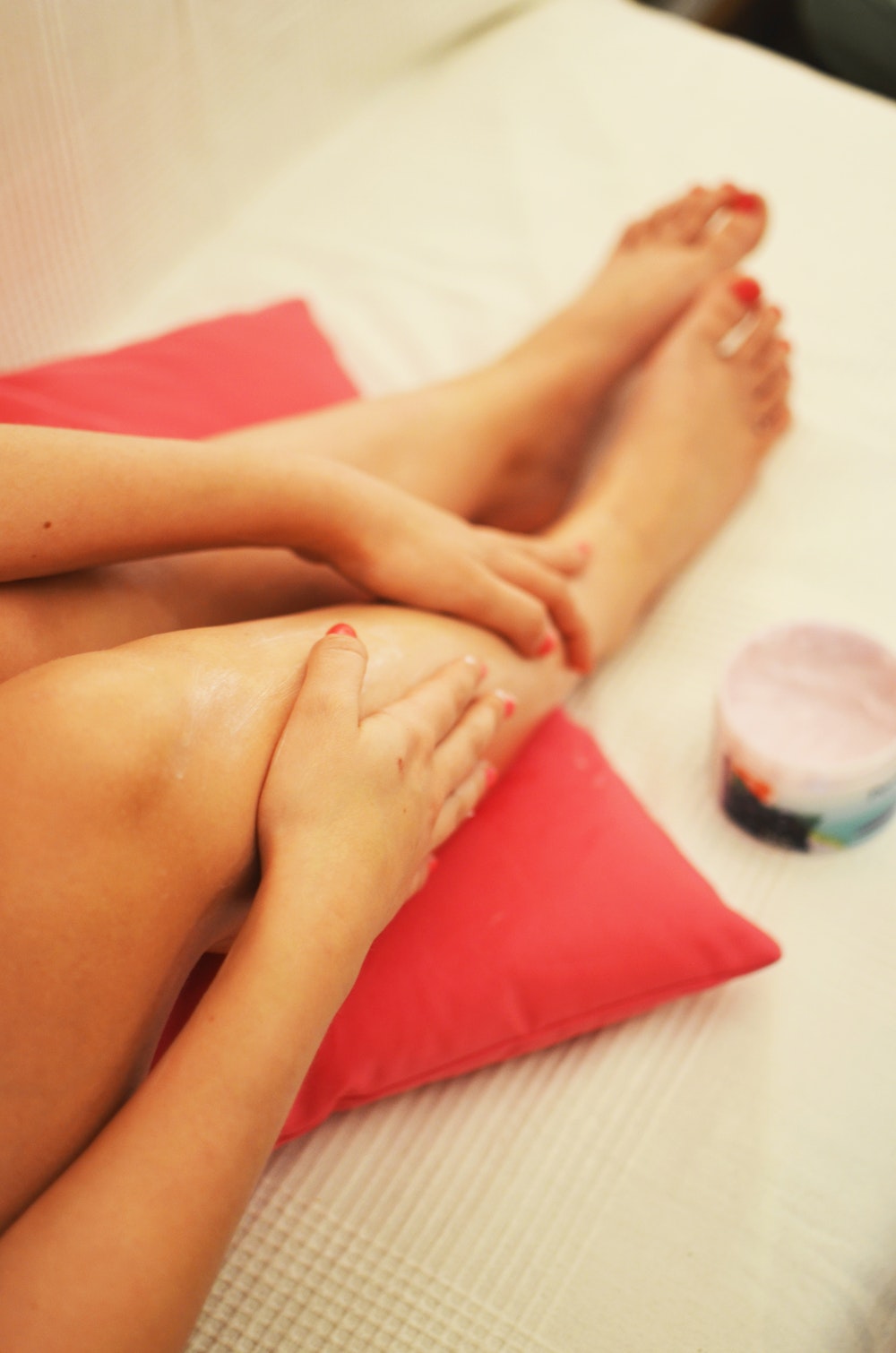
Is masturbation healthy?
Masturbation, or the self-stimulation of the genitals typically done to achieve sexual pleasure and often orgasm (sexual climax), is most commonly conducted by touching, massaging, or applying the use of an adult sex “toy” such as a vibrator. Studies indicate that approximately 95 percent of males and 89 percent of females report having masturbated at some point in their lives, with most individuals’ first sex act in life being masturbation. Children often stumble across it as they explore their bodies, and they usually continue the practice into adulthood.
It’s not a “perversion” anymore
What do other professionals say about it?
Several indications point to masturbation being very healthy for just about everyone. According to Dr. Lauren Streicher, an Associate Professor of Obstetrics and Gynecology at Northwestern University and author of Sex Rx: Hormones Health And Your Best Sex Ever, orgasms release the dopamine and oxytocin endorphins, which often lead to improved mood and a sort of “natural high.” Who can beat that?
It also helps us become aware of and in tune with our bodies, which can lead to an improved love and sex life. This is extremely important if we want to teach our partners how to pleasure us – we first need to gain confidence and know how to do it for ourselves. Further, says Streicher, it can help us fall asleep afterward, release stress and tension, ease body aches and alleviate menstrual pain. If you aren’t with a partner currently, masturbation can make sure your tissues stay healthy and elastic, keep the blood flowing properly, and even stimulate certain regions of the brain.
What else can masturbation do for me?
And that’s not all! Men’s Health magazine dove deeper into the health benefits and found that masturbation can even help prevent cancer! Turns out one Australian study found that men who ejaculate at least five times weekly are a third less prone to develop prostate cancer. The science behind this is that toxins can build up in your urogenital tract, and flushing it out through ejaculation helps keep the system clean. In addition, masturbating can boost your immunity. Since it increases the levels of cortisol in the body, the regulation of immunity comes as a side effect. It’s also a mood enhancer! Since, as previously mentioned, neurotransmitters like oxytocin and dopamine are released, Dr. Brame explains that, “An orgasm is the biggest non-drug blast of dopamine available. A brain scan of someone having an orgasm looks like a heroin addict’s.”
If you still aren’t sold on it yet, masturbation can also ease postmenopausal sex problems for women. According to Dr. Judi Chervenak, a gynecologist at New York City’s Montefiore Medical Center, “The vagina can actually narrow, which can make intercourse and vaginal exams more painful. But masturbation, especially with a water-based lubricant, can help prevent narrowing, boost blood flow, relieve some tissue and moisture problems, and increase sexual desire.” Additionally, for women, cervical infections and urinary tract infections may be kept away through masturbation since the process of “tenting”, or opening the cervix as an aspect of arousal, occurs. This opening stretches the cervix and its accompanying mucus, stimulates fluid circulation and the flushing of bacteria. Increasing the strength of the pelvic floor and lowering the risk of type-2 diabetes can also be accomplished via the contractions of regular orgasms.
There are a few concerns to note
Some occasions of overly rough or frequent masturbation resulting in skin irritation around the privates can also become a concern. Also, for men, the forceful bending of an erect penis can result in a harmful condition called penile fracture, often requiring surgery. It’s the compulsion, or the feeling that you need to do something regardless of a more pressing need, that creates the problem.
Otherwise, as long as you’re living a healthy, balanced life, masturbation can be a very healthy and beneficial part of it!
The Meaning and Method of Tantric Massage

What is Tantric Massage and How Can I Get/Give One?
According to Wikipedia, Tantric massage is comprised of various techniques from assorted schools of massage in addition to components of yoga, sexual therapy, and bioenergetics. The word tantra is taken from the Sanskrit root for ‘tan’, meaning to manifest, expand, weave, or show. The tantra, an ancient healing art, “denotes the esoteric traditions of Hinduism and Buddhism that co-developed most likely about the middle of the first millennium CE. The term tantra, in the Indian traditions, also means any systematic, broadly applicable “text, theory, system, method, instrument, technique or practice.” Tantric massage uses sexual energy through skilled massage therapists to promote a higher state of consciousness. Through such therapy, certain types of sensual touching can awaken energy fields which lie dormant in the human body and are believed to 1. help lovers unite in ecstasy or 2. to allow an individual’s trauma to flow from the body.
The primary goal is not sexual, but rather the conscious, careful uncoiling of dormant energy
The overall purpose of the tantric message is the unfolding of compressed energy in the body. This is often described as being conducted through the awakening of Kundalini, a mythological energy which lies coiled at the base of the spine. Kundalini uncoils, or rises, through the seven energy centers, or chakras, which run through the body along the spine in order to create healing throughout the body. Specialized techniques are utilized to place the client into deep relaxation, build a healthy level of chakra energy, and access personalized Kundalini arousal. Kundalini, when properly accessed, is said by some to be “a million times more potent than the body’s known energies.”
Sexual arousal does often occur, however, as an element of tantric massage, which is why it is most frequently given between intimate partners who are very comfortable with one another. Professional therapists who conduct this type of massage are taught to be keenly aware of their client and respond immediately and adequately when any amount of discomfort is expressed.
The releasing of blocked energy, stored pain, negative emotions, or trauma can occur
When done accurately, tantric massage can result in not only deep relaxation, but also the alleviation of negative emotions, trapped trauma, and the release of any physical pain carried in the body. Increased personal empowerment can also be experienced through the awakening of repressed parts of the self. Breathing techniques called pranayamas are used during tantric massage, which enhance the individual’s ability to move energy through different parts of the body. This, in turn, allows the client to use self-control to manage feelings of arousal which occur during the massage.
Other improvements can also occur, like enhanced awareness and higher energy levels overall
If performed accurately and regularly, this form of massage can use the breathing techniques to improve overall breathing. In turn, this enhanced breathing also improves alertness and awareness, optimal sleep cycles, higher energy levels overall, and decreased healing time from injuries and illness. If used to improve sexual arousal between partners, it can improve their connection emotionally and energetically as well.
There are important things to consider/remember if you think you’d like to give/get a tantric massage
In order to give a tantric massage, one must first create a comfortable atmosphere free of distraction and stress. Some therapists like to use soft, relaxing music or dim lighting to encourage deeply relaxed states. Next, you’ll need your client to lie down, facing downward, and focus on breathing in sync together. The massage will then become greatly personalized based on what you know about the client’s needs and history. It should be noted that Tantric massage is not actually supposed to be a sexual practice. It is rather intended to be peaceful, not stimulating, and any massaging of the sexual organs should not be conducted without prior agreement between both the client and therapist.
Tantric massage should not necessarily be equated with a sexual build-up and release
Some massage schools teach that the association between sexual energy build-up and tantric massage is not necessary and there is a need for re-education on the purpose of the truest methods. One such school explains that, “Tantra Massage can be done without a ‘happy ending’ …and tantra sexual skills must be practiced and taught in licensed premises and with proper supervision by either a psychologist, a sex therapist or a professional in the field of sexual education. Tantra teaches us to become familiar with our spiritual nature, and when we do so, our boundaries expand. We enter into new domains of awareness. We become empowered, more fulfilled, and embrace our true nature as feminine and masculine.”
The Tantric Massage Association
Developed in the 1980s, the first known center to offer tantric massage was the Tantra Institute of Germany. The Institute, founded by Andro Andreas Rothe, was called the Diamond Lotus Tantra Lounge. The Tantric Massage Association describes the philosophy as based on the work of Carl Rogers, Carl Jung, Alexander Lowen, Annie Sprinkle, Wilhelm Reich, Joseph Kramer, and Mantak Chia, with members residing predominantly in Switzerland and Germany.
Currently, one can find numerous centers which provide various types of tantric massage – but please be sure to do your research and make certain that therapists are trained and skilled in the appropriate techniques before visiting them.
The Meaning of the Hindu Chant “Om Gam Ganapataye Namaha”
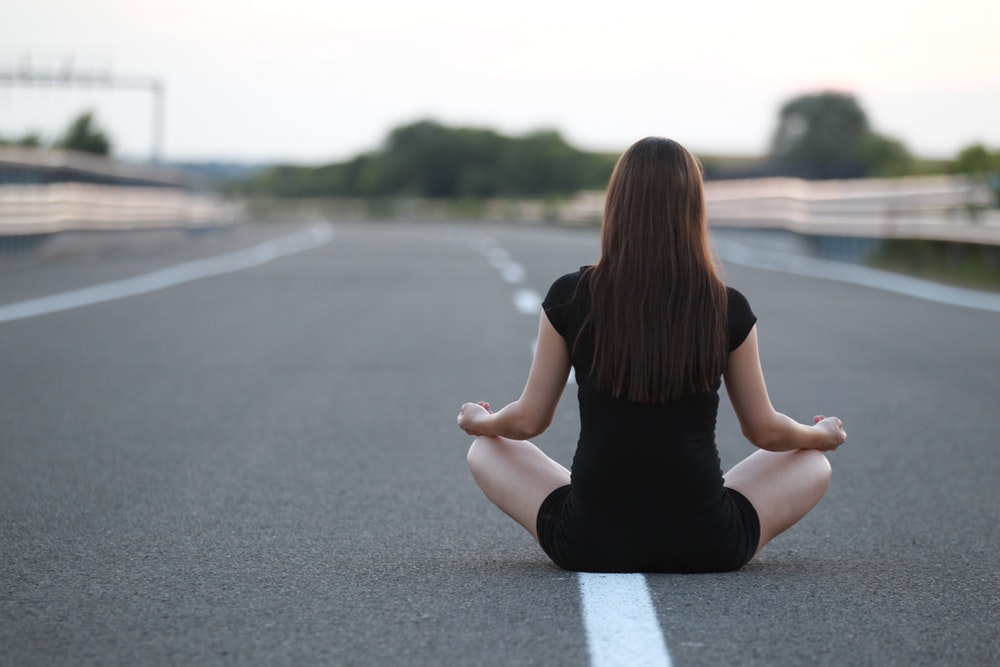
What is the meaning of the phrase, “Om Gam Ganapataye Namaha?”
According to the Hindu faith, Lord Ganesha is the Master of Wisdom and Knowledge, the awakening of the inner consciousness, and the first deity to be honored in Hindu rites. Essentially, by chanting (either out loud or internally) the mantra, “Om Gam Ganapataye Namaha,” (one of many mantras chanted in honor of Ganesha), devotees are believed to be using the sacred power of words and their accompanying sounds to call on their Lord Ganesha. This chant is repeated for a recommended forty days (in a ideally ritual conducted at the same time every day) in hopes Ganesha will aid the speaker in spiritual transcending, healing, awakening consciousness, and using the power of the mind to overcome obstacles. You can listen to the mantra chanted here, but in order to fully understand why this mantra exists, we must first understand the story of Ganesha himself.
Ganesha, the deity with the elephant head
You’ve likely seen Lord Ganesha before, known mostly widely for his elephant head. Typical depictions of the deity include his having anywhere between four and ten arms, a sideways-bent trunk, a pot belly signifying fullness and contentment, and attire of predominantly yellow or red. Usually, you’ll find a rat companion at his side as well. The trunk is believed to symbolize his ability to “lift obstacles,” while his rat friend is able to enter small spaces and overcome obstacles there, too.
But how did the elephant head come about?
In order to explain the elephant head, we must turn to Hindu legend held within the Vedic scriptures. Here we find that Ganesha is the son of Lord Shiva (the Hindu Lord of Transformation and Supreme Reality) and the Goddess Parvati (the Hindu Mother of the Cosmos), who was brought to life to guard Parvati’s door and keep her safe from harmful intruders. But later on, when Ganesha refused to allow Shiva into his home, they ended up dueling and Shiva cut off Ganesha’s head. This greatly upset Parvati, and upon seeing her distress, Shiva promised to give Ganesha a new head from the very next living being he could find. This being was, obviously, an elephant. That, in a nutshell, is how the great Ganesha with the elephant head came into being.
What else is associated with Ganesha?
In addition to being the remover of obstacles and Master of Wisdom and Knowledge, Ganesha also encompasses various other forms of symbolism. He is considered to be the guardian of beauty, for example, as well as the bearer of grace, compassion, and prosperity. He protects all beings, in addition to the doors of temples and houses, and bestows upon worshippers the ability to open their spiritual gifts. He represents a deepened or awakened consciousness, or state of self-realization, and the embodiment of bliss. The rat companion, Vahana, shown with him is also his ride – which further symbolizes his “killing of egoism”.
Ganesha has a connection to the chakras as well
As the ruling deity of the Muladhara Chakra, or root chakra, Ganesha is also associated with connecting us to our bodies and the earth in a “grounding” fashion linked to the first chakra. This connection brings conscious awareness to our bodies, pulling us out of our heads and into the present moment. Survival, stability, and security are also encompassed by the muladhara chakra, encouraging a strong foundation upon which to build one’s fullest life.
What is the actual meaning of the words in the chant, and how are they pronounced?
A loose translation of the words to the Om Gam Ganapataye Namaha chant is:
Om — Salutations, and/or Wake Up!
Gan — The seed syllable for ‘Ganesha’, or bija mantra, also referred to as the secret power of the sound of his name.
Ganapataye — A second name for Ganesha, signifying the breaking of obstacles
Namaha — Identifying/acknowledgment of Ganesha as a supreme being
The pronunciation can be heard in the video, or followed here:
Om = ohm or aum
Gam = Pronounced various ways, such as “gahm”, “gum” or “guhng” depending on the dialect of the speaker
Ganapataye = gah-nah-paht-ah-yeh
Namaha – Nah-mah-ha
You may find the chant associated with some forms of yoga when there is mention of grounding or connecting to the chakras. This is intended to build awareness, inner trust in one’s intuitive wisdom, and a base for a strong foundation in life.
In conclusion, according to BeYogi, “Like a tall tree with deep roots, to grow and expand a strong connection to body and to earth is vital. Ganesha’s large head represents our own capacity for expanded awareness. We forget that the universe is within us. To live our best life, we must open our big Ganesha ears and listen to the wisdom within, build a solid foundation, and from there tune into our full abilities.”
Healthy Fall Breakfasts for Busy Folks
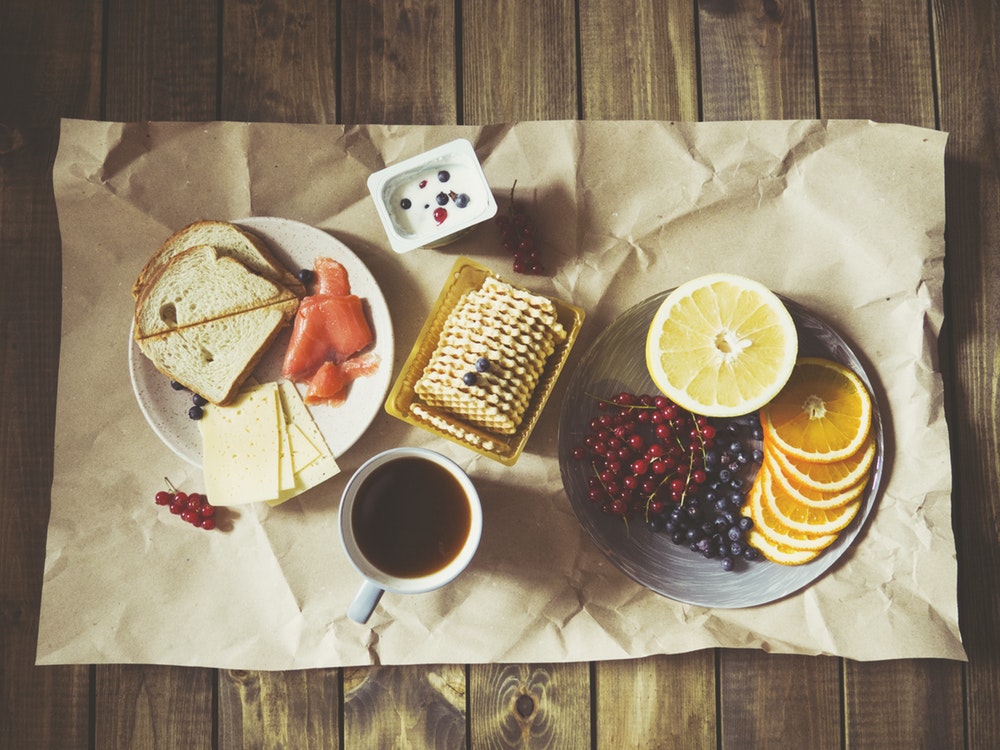
Get the Fall off to a Healthy Start with an Arsenal of Creative and Easy Breakfast Recipes!
Whether it’s getting the kids off to school, yourself off to work on a brisk morning, or just looking at a busy autumn day in general, most of us could use a few healthy and easy options for breakfast. But what can we do besides the same old dry cereals and grab-and-go granola bars? We’ve gleaned the best food blogs for a glimpse into the magic of a nutritious and hassle-free morning meal. Come check it out!
Crock Pot Creations
For starters, if you like using your crock pot, Dr. Axe has 19 variations on the crock pot breakfast ready for you here. The fun part about crock pot breakfasts is setting it up the night before and having it ready when your alarm goes off – Easy Peasy! Just make sure you follow the directions and use the appropriate setting on your crock pot (also please be sure your recipe matches the size of your crock pot) to avoid burning your breakfast or allowing it to get too well-done around the edges.
Or, if you’d rather make your hot bowl of goodness in the morning instead of overnight in the crock pot, this 30-minute recipe for Date-Sweetened Apple Pie Oatmeal can help use up the apples you’ll get at the orchard in a fragrant blend everyone will love!
Make Ahead Muffins
Provided you’ve got the ingredients on hand, most muffin recipes take less than half an hour to prep and bake – so if you want to wake your family up with great smells in the morning, go ahead and make them fresh when you get up. If you’re like me, however, and prefer to sleep a little longer in the morning, take it easy on yourself and make them the night before. They’re delicious and healthy either way!
Grab-and-go muffins are always a win, especially when you use unique ingredients like turmeric, carrots and chia. Chia orange cranberry muffins are a flavorful favorite in the morning, too, best served with a cup of cold vanilla almond milk or coconut cream on the side for dipping. And finally, the flavors of peanut butter, chocolate (the healthy kind), and bananas can help even the groggiest morning person get into that shower and out the door.
Wake your household up with the smell of cookies baking on a cool fall morning!
If you’d rather skip the muffins, but still want something satisfying, try these One-Bowl Vegan Everything Breakfast Cookies – featuring the best of everything you can put into a cookie. Delicious and ready in only 25 minutes from prep to plate! Don’t be afraid to pack a few in lunches too – these are tasty hot or cold.
Creamy Breakfast Shakes and Smoothies
If you’re like us and prefer to chop up bananas and freeze them just before they get too ripe, you’ll already have one of the main ingredients for these delectable breakfast shakes ready. Just add a few other favorites, and voila! Another easy fall breakfast is in your hands!
Try the Minimalist Baker’s Creamy Chocolate Breakfast Shake for starters, or grab some lemon and blueberries for the Connoisseurus Veg’s Lemon Blueberry Almond Smoothie. Green Evi’s vitamin-boosting Red Smoothie uses beetroot and frozen raspberries for optimal color and flavor. Strawberry Hemp Protein Smoothies and Blood Orange Green Smoothies are blissful on their own, as well, or kick a little extra oomph in with a tiny sliver of fresh ginger – starting with a peeled piece no bigger than the size of your pinkie fingernail. Add more to taste if you wish.
Make the Night Before
This mouth-watering Chocolate Chai Chia Pudding is absolutely healthy enough for breakfast, as well as completely vegan – but requires two hours to fully set, meaning prepping it up the night before is in order. This variation of Golden Milk Chia Pudding with ginger (replace the ground ginger with fresh if you’ve got it) and orange is tasty too. And no autumn is complete without pumpkin spice something, right? Green Evi knows. Her Pumpkin Spice Chia Pudding brings you the maximum fall-flavored morning treat. Placing the prepared ingredients into small jars or other to-go containers to set makes a great dessert to pack in lunch boxes too, although refrigeration may be needed.
Hot Breakfasts Ready in Less Than 30 Minutes
Make these in the morning with pre-prepped ingredients the night before for even faster breakfasts!
3-Step Best Ever Vegan Breakfast Potatoes are delicious on their own with a tangy dipping sauce, or with a Simple Southwest Tofu Scramble, with each taking 30 minutes or less from prep to plate! Easy 30-minute Vegan Breakfast Tacos, Savory Breakfast Salads (these actually only take 20 minutes total), and Tiramisu Pancakes (save time on these by pre-mixing the dry ingredients the night before when you soak the cashews) are all winning strategies for frantic fall mornings. Be creative and most importantly, enjoy!
Can Gluten Make You Tired? (Answer: Yes, Indeed, and Then Some…)
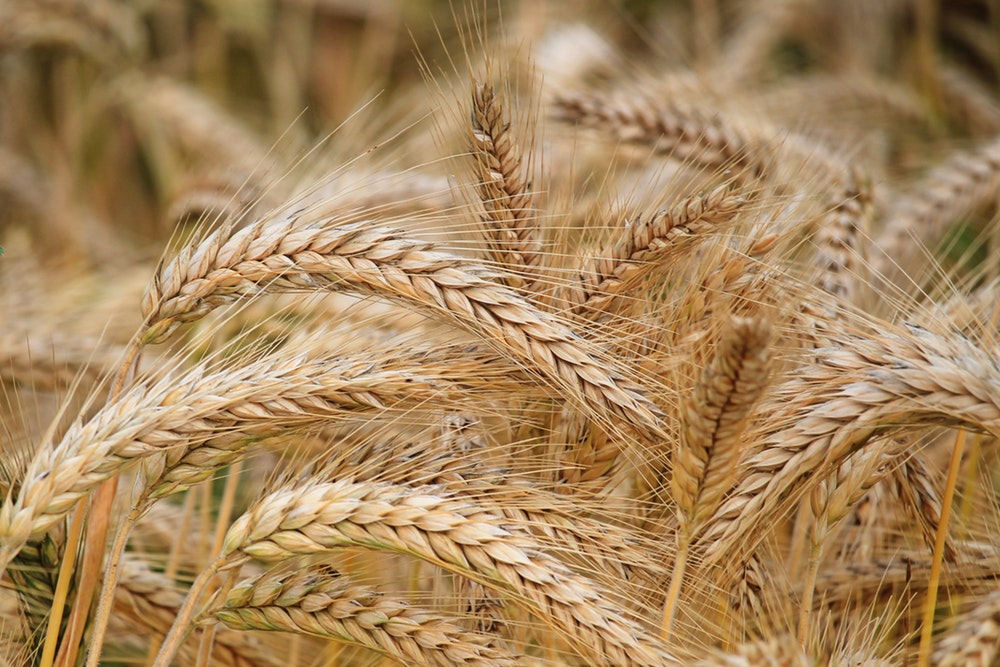
Does gluten make you tired?
After exploring all the ways gluten can be harmful, there’s no denying that gluten can indeed make you tired. But that’s not all it can make you. For those who are gluten intolerant, it can also make you sick and very deficient in nutrients. Let’s take a look at how and why.
Gluten irritates the intestinal lining, preventing the proper absorption of nutrients
If you feel lethargic after ingesting gluten, you may be intolerant and can find out by trying a gluten-free diet for a month or so. If you find you are gluten-sensitive, then you may not only be getting tired from it, but also depriving your body and brain of vital nutrients and carrying extra weight unnecessarily. Headaches and other signs of nutrient deficiencies may accompany your condition as well.
Without the nutrients you need, your body responds by growing lethargic and weak
Essentially, gluten causes irritation to the lining of the intestines in those who are sensitive to it. This in turn hinders the absorption of vital nutrients such as Vitamin D, B-12, copper, folate, iron, niacin, riboflavin, and magnesium. Without these important vitamins and minerals, the University of Chicago Celiac Disease Center explains that your body gets fatigued, lethargic, and weak. Now’s the time to check with your physician for the proper testing and medical suggestions.
Track your eating and tiredness patterns in a journal, and share it with your doctor
Tracking your daily eating habits and exactly what you’re eating alongside how you’re feeling can help you discover the source of your tiredness. A pattern will develop if you are indeed gluten-intolerant. Once you discuss this or any such patterns you discover with your physician, an appropriate diet should be provided.
One such problem: Leaky Gut
Leaky gut is one response to gluten-intolerance which can cause significant problems. Here a component of gluten damages your gut lining, allowing food particles or other such debris to slip through the gut wall, which creates a response from your immune system –it’s perceived as an invader, because it essentially is one. However, the symptoms which occur later can be anything from bloating and fatigue to weight gain and inflammation.
Inflammation leads to chronic inflammation — which can cause serious diseases like cancer and diabetes
The inflammation triggered creates more problems for you as it tries to “fight the invader.” These problems include inability to lose weight, increased cortisol levels, fluid retention, poor digestion, and more feelings of sluggishness. To top it off, chronic inflammation contributes to many diseases including cancer and diabetes.
The Problem with Too Much Gluten, High Blood Sugar and Insulin Resistance
Constantly eating gluten-containing foods adds to your blood sugar levels, raising them higher. When this occurs, your pancreas tries to lower them with insulin. This, in turn, overloads your cells with insulin, so they stop receiving the message to store glucose, and the lectins found in gluten bind to insulin receptors, which results in insulin resistance. Your fat cells become highly difficult to lose because of this. Breads and other foods containing gluten also contain high-fructose corn syrup, adding fructose as another link to insulin resistance (as proven in a study by the journal Nutrition and Metabolism).
We crave what we react to the most, like any other type of addict
An odd effect of the foods we react to the most is a sense of craving for them. Dr. Daniel Kalish explains that the body creates addictive substances called opioid endorphins which give us feelings of euphoria after ingesting such foods, creating cravings for them.
From there, further nutrient blockage ensures. When gluten limits nutrient absorption, we don’t get our proper nutrient levels, nor does our body appropriately make Vitamin B-12. Additionally, important minerals like chromium are made bio-unavailable by the phytates in gluten and some other grains, making it difficult for us to balance out our blood sugar levels.
We’ll all be just fine without gluten…unless, of course, you work for the grain industry…
For those who worry that without gluten, we won’t get the proper nutrients–
let it be known that according to Celebrity Nutritionist, Fitness Expert, and New York Times Best-Selling author JJ Virgin, all the vitamins, minerals, antioxidants and other nutrients the body needs can be found in vegetables, lean proteins, low-glycemic fruits, and starchy fiber-rich carbs like lentils and sweet potatoes. There is little, if any, need for gluten in the diet. Why not cut it out completely?
*as with all my articles, please consult a physician before attempting this or any other diet strategy
